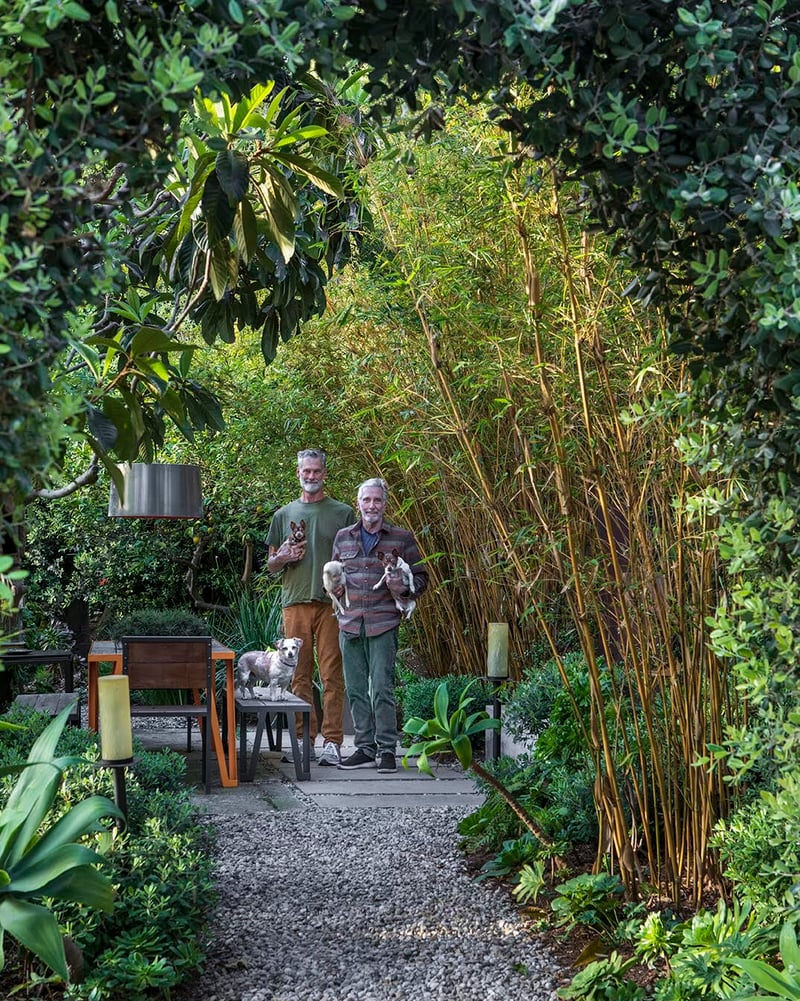|
|
|
|
|
|
|
Dear DNA friends,
Hope you are doing well, despite the heat, and excited about the advent of Barbie, the movie! More on that, in Design Things to Do, below.
Before that, a great loss.
Dear Bill
When I started work on my book, Common Ground, I had a vague notion of a narrative about a type of housing that is widespread though under-appreciated in Los Angeles: self-contained communities in dwellings around shared open space. They can be found at multiple scales, from the bungalow courts to large garden apartment complexes and, now, multistory apartment buildings with gardens on the roof.
By chance –– through meeting the photographer, Art Gray –– I happened upon a unique and lovely example, which became my north star and concluding story for Common Ground. It was the "3rd Street Compound" in Ocean Park, also known as "Tales of the City South," four adjoining lots with a single home on one and rental cottages on the other three, knitted together by one large gorgeous, shared garden. Here co-existed 15 people of different ages and backgrounds, including Art, along with 12 dogs and four cats, all behind a large fence concealing the secret garden within.
The compound was the creation of two men: Tomas Fuller and William Kelly, inseparable since meeting in the 1970s. This past Sunday, Bill died, after falling ill on a vacation in Spain. He had been mastering Spanish since retiring from a career in anesthesiology and then hospice work. He leaves behind Tom and a shocked community, but one bound by Bill and Tom's core belief in connection, and in a more urban Los Angeles, less solitary than the suburbs they grew up in.
As Bill said on this Greater LA segment about the compound. “You can go buy a big huge mansion and live inside your 20 rooms in the best part of the city. [But] if you get done with work, you go home at the end of the day, and you're alone. I actually realized I like the neighbors. And I like sharing things. Everyone looks after each other.”
The last time I saw Bill, he was talking excitedly about checking out the Regional Connector, which he and Tom did, the day before he passed.
I feel so lucky to have known this beautiful man who co-created a beautiful place.
RIP dear Bill (11/14/53 - 7/9/23).
 William Kelly, right, with Tomas Fuller and their dogs in the 3rd Street Compound, 2022. Photo by Art Gray. William Kelly, right, with Tomas Fuller and their dogs in the 3rd Street Compound, 2022. Photo by Art Gray.
Parking, Radicals, and the Second Stair
While the primary intent of Common Ground was to celebrate lives lived in micro-communities like Tom and Bill's compound, the book also touches on the range of factors that shaped such places –– from the seemingly mundane, like parking minimums, to the ideological movements influencing the built environment.
So I'm thrilled that reporters have recently taken up and expanded on these themes.
In this article in Capital & Main, Kelly Candaele has focused on the "radicals and other visionaries" like Gregory Ain, and the architects and planners behind the public housing program of the New Deal years, who "challenged the real estate industry by pushing bold public housing projects and alternative forms of ownership."
Carolina Miranda, in this essay in the LA Times, wrote about parking, and how much it dominates land use in America, based on reading two books: Common Ground and Henry Grabar’s clever, tragi-comic book, Paved Paradise: How Parking Explains the World.
As Miranda points out, "parking lots and garages — especially underground parking — consume vast amounts of land and are expensive to build; as a result, they send construction costs skyrocketing. This makes it near-impossible to produce the sorts of small buildings that might be affordable to middle-of-the-road wage earners in urban areas like Los Angeles."
Some designers and developers are figuring out smart workarounds to parking minimums, as modeled in the complexes in Common Ground. They are also tackling other obstacles to attractive "small buildings that might be affordable to middle-of-the-road wage earners," such as the mandatory second stair.
Read on for more about that and more in Design Things to Do.
|
|
|
|
|
|
|
|
|
|
|
|
|
|
|
|
|
|
|
|
|
|
|
|
|
|
|
|